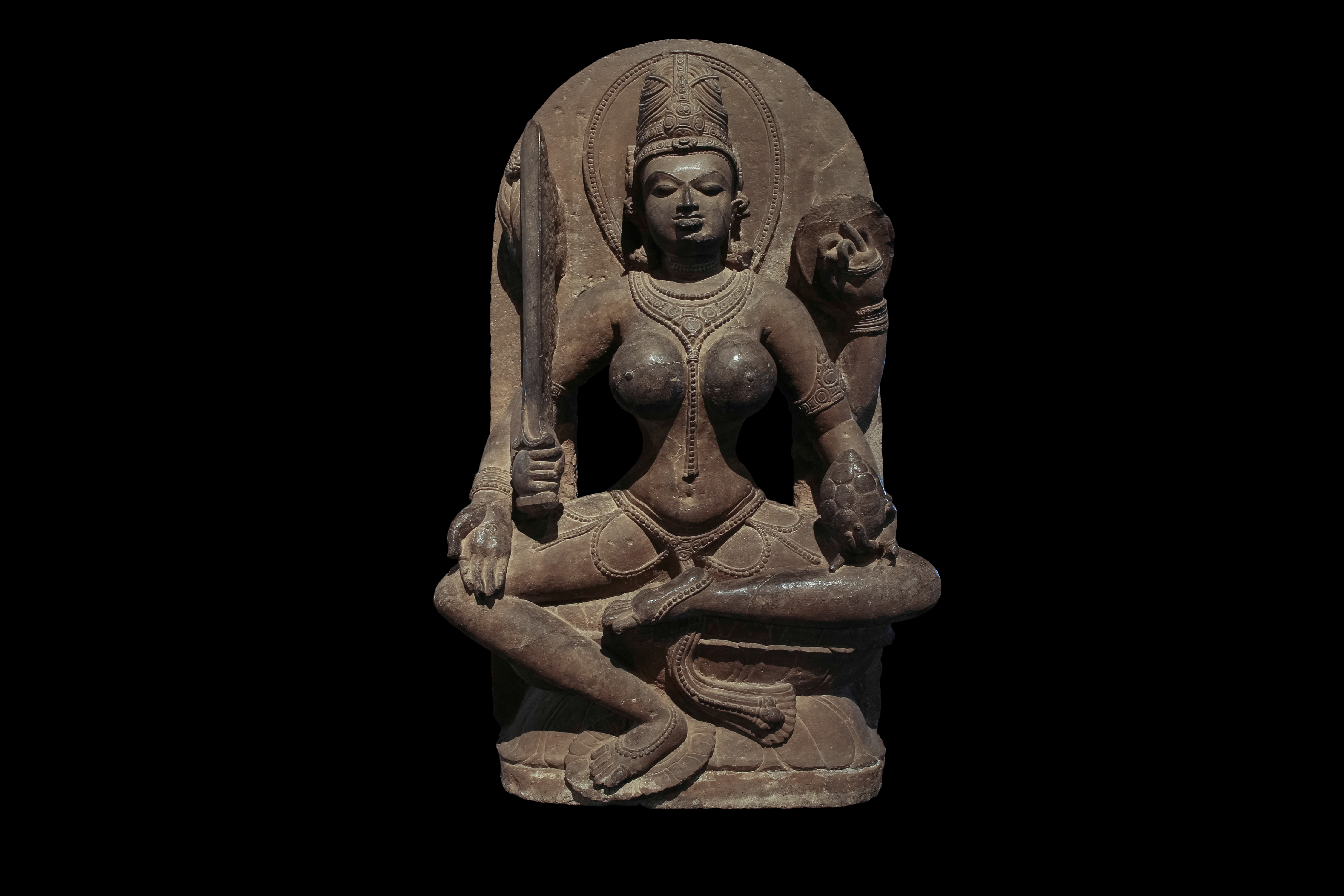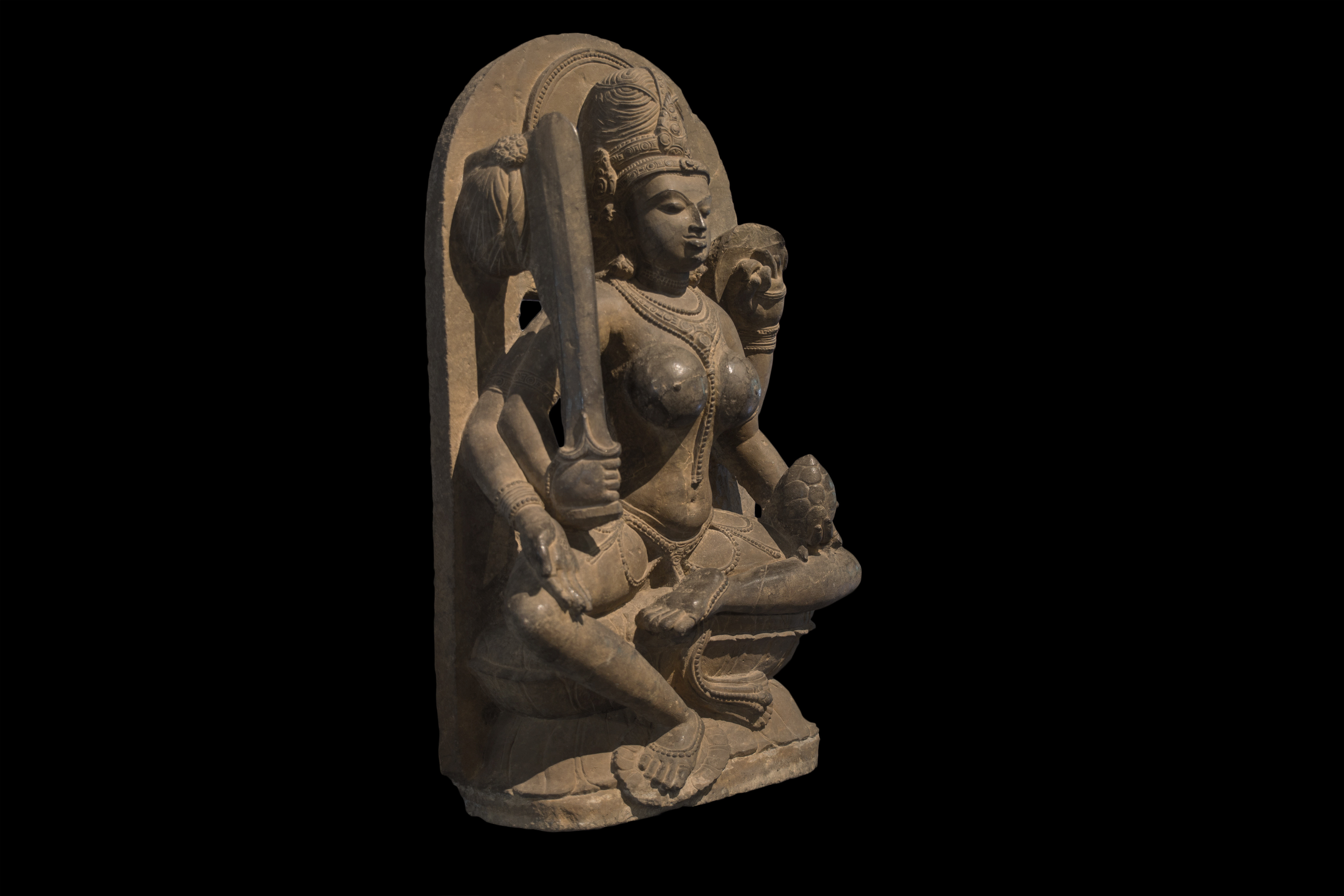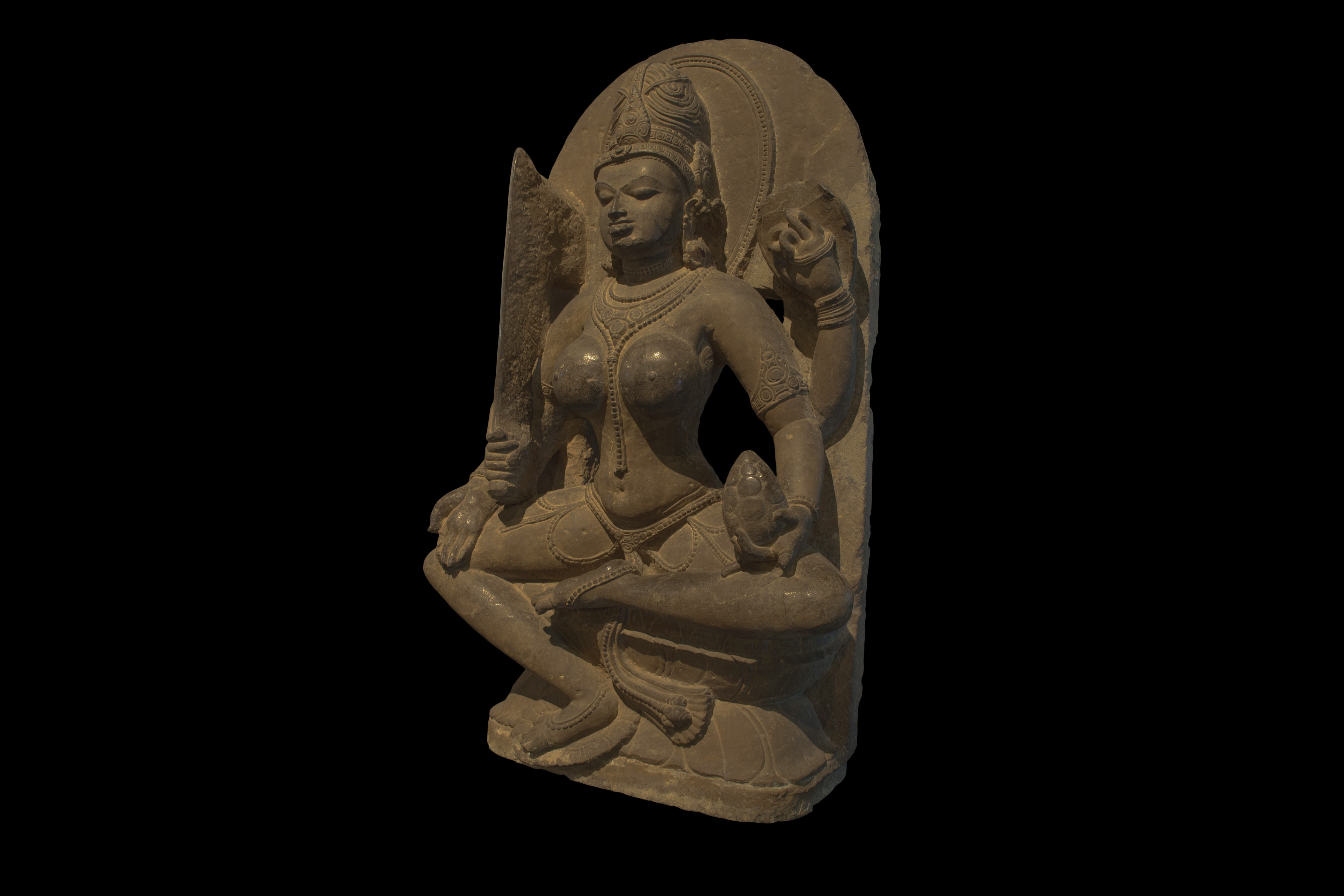Durga
Original Location: Karnataka
Present Location: Chhatrapati Shivaji Maharaj Vastu Sangrahalaya, Mumbai
Date: 10th century CE
Period: Early Medieval
Material: Sandstone
Objects: Sculpture
Dimensions: H 84.5 x W 50 x D 20.5 cm
Credits: Chhatrapati Shivaji Maharaj Vastu Sangrahalaya, Mumbai
The sculpture is historically significant in two aspects – development in religion and art. The worship of Mother Goddess in India is very ancient with evidence coming from the Indus Valley civilization (3500-1500 BC). The tenets of worship of female energy or shakti having being established, its outward manifestation in the form of idols and sculpture was a natural corollary. The iconographic features of Durga became common throughout India by about the 4th century AD.
This sculpture of Durga is thought to be one of the Navadurgas (nine-Durgas). This image depicts the Goddess in the prime of her youth rendered beautifully by the round formation of her body. She is seated on a pedestal in Lalitasana, a pose in which one foot is on top of the other thigh and the other foot is pendent. Sitting in a noticeably straight posture, she shows her unchallengeable power by carrying a sword or a khadga in her right hand. In the other two hands, she holds the shield and the fruit of bijapuraka. Her fourth hand is in the gesture of varada mudra from which she is bestowing boons on her devotees. Adorned with the usual ornaments common to the sculptures of this region, she wears her hair dressed up like a crown, known as the jatamukuta. Yet her face remains calm and serene as she unleashes her anger for the good of people and holds no hatred towards the evil.
Durga is the most popular Goddess out of the nine main manifestations of Shakti. She embodies the power that destroys the evil forces or demons. She is the fiercely protective Mother Goddess willing to unleash her anger against evil and liberates the oppressed. The Goddess is worshipped in temples and homes especially in the nine-day festival which is called Navratri. It is a multi-day festival that features elaborate temple and stage decorations (pandals), scripture recitation, performance arts, revelry and processions. A key text associated with Durga Puja observations is Devi Mahatmya, which is recited during the festival.
 Government of Indiaa
Government of Indiaa




 Recognizing the ongoing need to position itself for the digital future, Indian Culture is an initiative by the Ministry of Culture. A platform that hosts data of cultural relevance from various repositories and institutions all over India.
Recognizing the ongoing need to position itself for the digital future, Indian Culture is an initiative by the Ministry of Culture. A platform that hosts data of cultural relevance from various repositories and institutions all over India.
